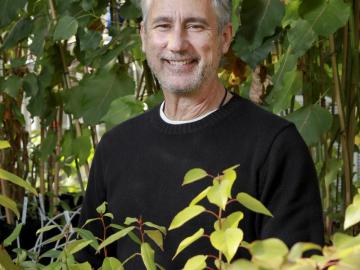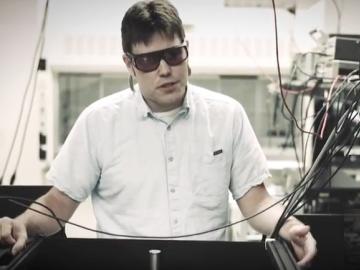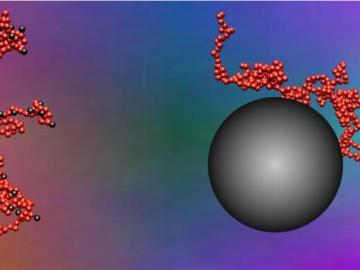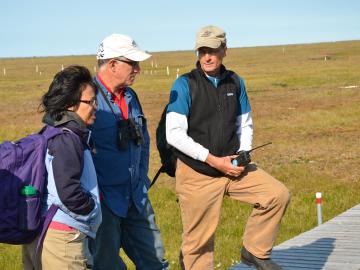
Filter News
Area of Research
- (-) Biology and Environment (85)
- (-) Materials (237)
- Advanced Manufacturing (14)
- Biological Systems (14)
- Biology and Soft Matter (1)
- Building Technologies (3)
- Chemistry and Physics at Interfaces (5)
- Computational Biology (4)
- Computational Engineering (2)
- Computer Science (4)
- Data (1)
- Energy Frontier Research Centers (8)
- Energy Science (245)
- Energy Sciences (2)
- Fossil Energy (2)
- Fuel Cycle Science and Technology (1)
- Functional Materials for Energy (7)
- Fusion and Fission (24)
- Fusion Energy (3)
- Geographic Information Science and Technology (2)
- Isotope Development and Production (2)
- Isotopes (18)
- Materials Characterization (2)
- Materials for Computing (13)
- Materials Synthesis from Atoms to Systems (6)
- Materials Under Extremes (6)
- National Security (40)
- Neutron Science (85)
- Nuclear Science and Technology (29)
- Nuclear Systems Modeling, Simulation and Validation (1)
- Nuclear Systems Technology (1)
- Quantum Condensed Matter (1)
- Quantum information Science (1)
- Reactor Technology (1)
- Sensors and Controls (2)
- Supercomputing (117)
- Transportation Systems (5)
News Type
News Topics
- 3-D Printing/Advanced Manufacturing (15)
- Advanced Reactors (1)
- Artificial Intelligence (5)
- Big Data (3)
- Bioenergy (24)
- Biology (34)
- Biomedical (10)
- Biotechnology (7)
- Buildings (2)
- Chemical Sciences (25)
- Clean Water (4)
- Composites (5)
- Computer Science (14)
- Coronavirus (9)
- Critical Materials (8)
- Cybersecurity (4)
- Energy Storage (22)
- Environment (41)
- Exascale Computing (2)
- Frontier (2)
- Fusion (4)
- Grid (3)
- High-Performance Computing (12)
- Hydropower (2)
- Isotopes (5)
- ITER (1)
- Machine Learning (5)
- Materials (45)
- Materials Science (45)
- Mathematics (3)
- Mercury (3)
- Microscopy (19)
- Molten Salt (2)
- Nanotechnology (26)
- National Security (3)
- Neutron Science (23)
- Nuclear Energy (4)
- Partnerships (9)
- Physics (20)
- Polymers (9)
- Quantum Computing (2)
- Quantum Science (10)
- Security (1)
- Simulation (8)
- Summit (5)
- Transportation (4)
Media Contacts

It’s been 10 years since the US Department of Energy first established a BioEnergy Science Center (BESC) at Oak Ridge National Laboratory (ORNL), and researcher Gerald “Jerry” Tuskan has used that time and the lab’s and center’s resources and tools

Finding new energy uses for underrated materials is a recurring theme across Amit Naskar’s research portfolio. Since joining Oak Ridge National Laboratory in 2006, he has studied low-cost polymers as carbon fiber precursors, turning lignin−a byproduct of biofuel production−into renewable thermoplastics and creating carbon battery electrodes from recycled tires.


Oak Ridge National Laboratory today welcomed the first cohort of innovators to join Innovation Crossroads, the Southeast region's first entrepreneurial research and development program based at a U.S. Department of Energy national laboratory. Innovation Crossroads, ...




Ecologist Virginia Dale is an ORNL corporate fellow and director of the lab’s Center for BioEnergy Sustainability. In her work she focuses on environmental decision making, plant succession, land-use change, landscape ecology, ecological modeling, sustainability, and bioenergy systems. Dale...

Stan Wullschleger did not intend to stay so long at Oak Ridge National Laboratory, but as many other scientists can relate, time flies when you’re engaged in interesting work. “I don’t know if you can tell while it’s happening or you just notice it in hindsight, but the lab is a wonderful place t...

CCSI scientist Jiafu Mao, of the Terrestrial Systems Modeling group in the Environmental Sciences Division, parlayed his interest in physics and mathematics as a student in China into a field of study he has always found interesting


